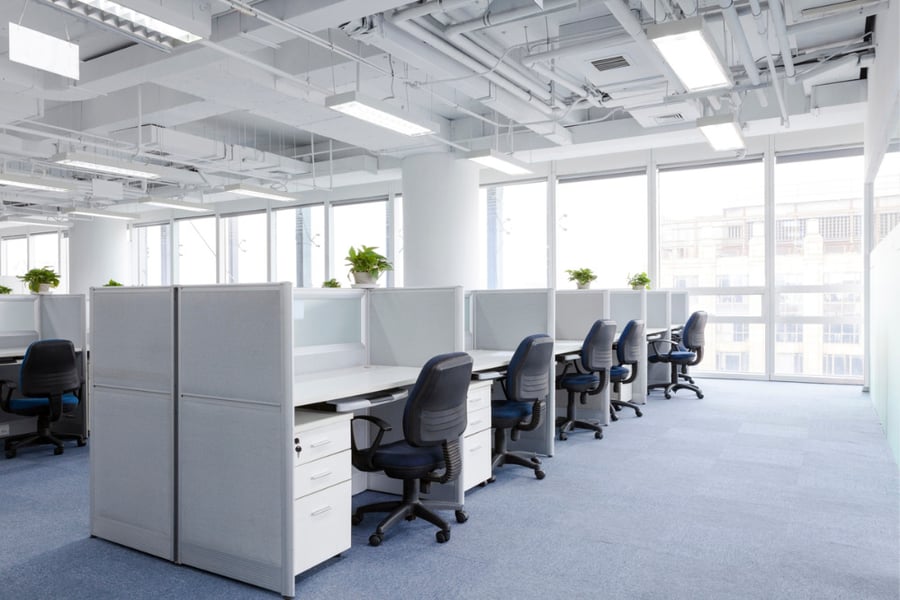Retail continues getting crushed, but investment in office space also softened in Q2

Last week, Morguard released its 2020 Canadian Economic Outlook and Market Fundamentals report for the second quarter of 2020. The report found that the transaction volume for commercial real estate properties fell drastically in Q2, and it wasn’t just retail properties dragging the sector down.
Morguard reported decreases in transaction volume for retail, office and even multi-suite residential properties of at least 58.3 percent in Q2, explaining that “many of the transactions completed during the second quarter were negotiated either in late 2019 or prior to the COVID-19 crisis in early 2020.” Of the three sectors, only retail had experienced a decrease in closing activity prior to the COVID-19 outbreak.
According to Morguard’s director of research Keith Reading, the fall in transaction volume for office and multi-family properties was the result of COVID-19 and not due to any significant weakening of either sector’s underlying fundamentals. In addition to sellers’ justified fears of listing their properties at a time when values may be falling, a lack of buyers willing to view properties at the height of the pandemic also contributed to the decline.
“I think you’ll see investors toward the end of the year really jump back into the market,” Reading says.
While a rebound in demand for multi-family properties can be expected in a country where its largest markets are all suffering from some form of housing shortage, the demand for office space at a time of social distancing may seem like more of an unknown. Rather than foreseeing a dramatic drop in demand or rents, Reading instead sees office usage changing through the creation of larger cubicles and altered work schedules.
“They’ll still go into the office,” Reading says of the employees of commercial tenants, “you just may not see that nine-to-five model that we’re used to.”
The report did find what appears to be a temporary softening of office leasing supply fundamentals, as the average vacancy rate rose 50 bps during Q2 to hit 10.8 percent at the close of June. (It was still 40 bps lower than at the end of Q2 2019.) Morguard also disclosed that an increase in subleasing activity in Vancouver and Toronto had driven each city’s vacancy rate higher. Toronto experienced an 86 percent increase in sublease space in Q2.
“Over the near term, businesses were expected to continue to reduce premises costs by shedding excess space, resulting in the continued softening of office leasing fundamentals over the near term,” reads the report.
The industrial sector, as it has throughout the pandemic, continued to outperform its commercial counterparts. Driven by a prolonged increase in online shopping demand, industrial saw its second quarter sales volume rise by 25.1 percent. Morguard says the space should “continue to drive above-average industrial property sector investment activity levels over the near term.” The delivery of 6.9 million square feet of new supply during Q2 did little to negatively impact industrial rents or prices, as demand remains sky-high.
Reading says the surge in industrial, as it reflects an ongoing shift in consumer behaviour and not just a reaction to COVID-19, is a trend that is here to stay. Online retailers will be intensifying their efforts to get their goods to consumers faster than their competitors, which will mean acquiring more properties near large population centres.
“Companies need more storage space. They need more last-mile delivery space,” Reading says. “That’s really driving this demand for industrial space, and I don’t see that slowing down any time soon.”
Retail’s struggles are, by now, common knowledge to anyone who has walked through a mall in the last five years. The Morguard report didn’t dig too deeply into retail’s dispiriting situation, but Reading, despite saying the sector has been “in a bit of a freefall for the last few years” remains optimistic that some of the country’s most challenged malls and shopping centres will find non-retail tenants like medical offices and banks to fill their empty storefronts, turning these properties into conveniently located hubs of community-focused service providers.
“I think you’re going to see some downward pressure on rents and some upward pressure on vacancy,” in retail, Reading says. But as the retail space evolves, he expects rents and demand to rebound.
“We’re seeing a transitioning of how real estate is used, so these headlines about ‘Is the office market dead?’ ‘Is retail dead?’ to me is kind of nonsense,” he says. “Our society is the way it is, and we’ll always need real estate.”
Crystal ball time
Looking to the commercial market’s near-term future, Morguard says premium pricing is likely only to be attached to low-risk properties in established nodes with stable, long-term tenants. As such, the group expects industrial and multi-suite residential to lead the way, with the anticipation of a COVID-19 vaccine and a “modest” global economic recovery bolstering investor confidence “by 2021”.
Like the commercial sector’s recovery, Morguard expects Canada’s overall bounce-back from COVID-19 to be uneven, led by provinces that avoided significant rates of infection, like British Columbia, Manitoba and New Brunswick. The country’s oil-dependent provinces, Alberta, Saskatchewan and Newfoundland and Labrador, are expected to lag behind. The report says that the country’s employment situation, which drastically improved from May to June, indicated that “the COVID-19 driven correction was more moderate than first thought.”
Reading is projecting a steady increase in job growth as the economy continues to reopen, but he doesn’t expect to see hiring levels returning to their pre-pandemic levels “at least for the next couple of years.”
He insists that a two-year recovery window is no cause for panic in the commercial world.
“That’s not that long of a a recovery cycle,” Reading says, adding that the growth cycle in commercial real estate is typically between eight and 10 years.
“So a two-year window of recovery is actually kind of a blip.”



